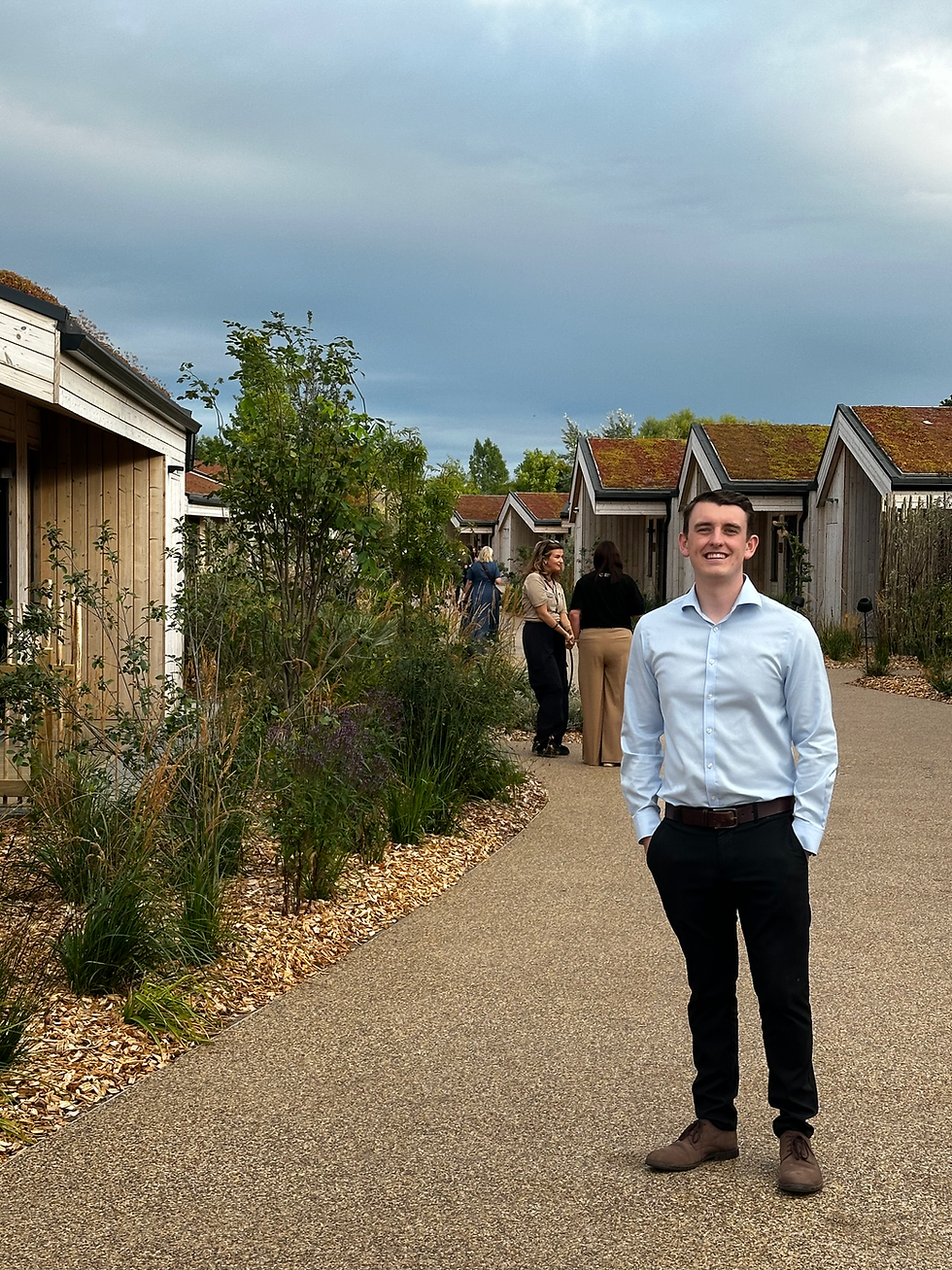Berlin 2024 Research Staff Trip
- evoke-architecture
- Oct 22, 2024
- 3 min read

This year, our office took a study trip to Berlin, a city where history and modernity collide in striking architectural forms. Our focus was on understanding how the city’s architecture reflects its complex past while pushing boundaries in contemporary design.
We began at the Brandenburg Gate, one of Berlin’s most iconic landmarks. Built in the late 18th century, this neoclassical monument was designed by Carl Gotthard Langhans, taking inspiration from the Propylaea of the Acropolis in Athens. The gate’s Doric columns and symmetrical design make it a prime example of neoclassical ideals of order and proportion. We discussed how, despite its original function as a city gate, it has become a powerful symbol of both division and unity through history, especially following the fall of the Berlin Wall.
Another impactful site we studied was the Memorial to the Murdered Jews of Europe. Designed by Peter Eisenman and completed in 2005, the memorial consists of 2,711 concrete slabs arranged in a grid pattern. What struck us was Eisenman’s use of abstract forms to evoke a sense of disorientation and unease, allowing visitors to experience a physical metaphor for the horror of the Holocaust. The varying heights of the slabs and the uneven ground beneath them play with the viewer’s sense of balance and scale, creating a powerful interaction between architecture and emotion.

From there, we visited the Reichstag Building. This historical structure, originally designed by Paul Wallot in the 19th century, has undergone several transformations. After suffering extensive damage during World War II, the Reichstag was restored, culminating in the addition of a modern glass dome by Norman Foster in 1999. The dome, a feat of engineering and design, represents transparency in government, allowing visitors to literally look down on the workings of parliament below. We discussed Foster’s use of natural light and ventilation in the dome’s design, a sustainable approach that reflects modern architectural concerns while respecting the building’s historic roots.

One of our stops on Museum Island was the Altes Museum, designed by Karl Friedrich Schinkel in the early 19th century. The museum, which houses classical antiquities, is one of the earliest examples of neoclassical design in Berlin. Schinkel’s use of Ionic columns and a central rotunda drew heavily on ancient Greek architectural principles, creating a space that elevated the status of art and culture. The symmetry and clarity of the museum’s design provided us with a textbook example of the influence of classical architecture on public buildings in Europe.
Our favourite architectural piece on the trip was undoubtedly the James Stirling Gallery, designed by David Chipperfield. The gallery, a part of the Neues Museum, stood out for its elegant simplicity and refined use of materials. Chipperfield’s approach to the building respects the historic fabric of the museum while introducing modern interventions that blend seamlessly into the older structure. The careful use of natural light, restrained detailing, and his signature use of exposed concrete gave us much to discuss, particularly the way Chipperfield balances modernism with respect for heritage architecture. For our office, this gallery exemplified the kind of thoughtful, context-sensitive design that we strive to bring to our own projects.

Another key site for us was the Tchoban Foundation - Museum of Architectural Drawing. This building, designed by Sergei Tchoban, stands as a modernist interpretation of its contents—architectural drawings. Its etched glass façade reflects the intricacy of the drawings it houses, creating a dialogue between the building and its exhibits. What fascinated us was how the museum itself becomes an architectural statement on the importance of architectural representation, blending the past with the present in its form and function.
Overall, our trip to Berlin was a deep dive into the architectural history and innovation that the city embodies. The blend of historical significance and contemporary design gave us a fresh perspective on how architecture interacts with the culture, history, and future of a place. We returned with a wealth of knowledge and inspiration for future projects.





Comments